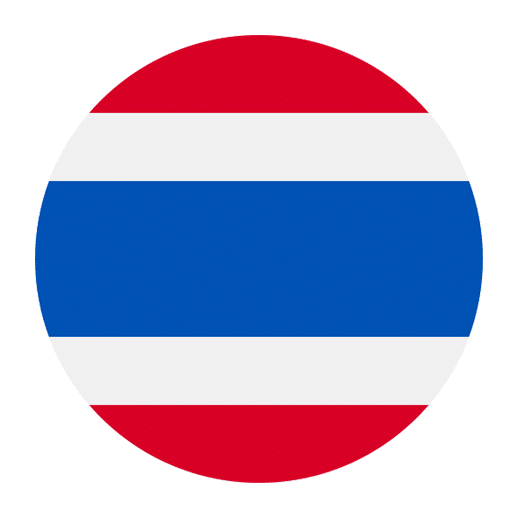Learning a new language can be a fascinating journey, especially when it involves diving into the rich cultural and historical contexts of the language you are studying. Thai, the official language of Thailand, is no exception. The history of Thailand is vast and intricate, spanning over a millennium, and understanding the vocabulary used to describe different historical periods can provide deeper insights into the culture, society, and evolution of the Thai people. In this article, we will delve into essential Thai vocabulary for describing historical periods, exploring terms that will enhance your understanding and appreciation of Thailand’s storied past.
Prehistoric Thailand (ก่อนประวัติศาสตร์)
Before written records, Thailand’s history is known through archaeological findings and anthropological studies. The term for prehistoric times in Thai is ก่อนประวัติศาสตร์ (gòn bprà-wàt-tì-sàat).
– **Prehistory**: ก่อนประวัติศาสตร์ (gòn bprà-wàt-tì-sàat)
– **Stone Age**: ยุคหิน (yúk hĭn)
– **Bronze Age**: ยุคสำริด (yúk sǔm-rít)
– **Iron Age**: ยุคเหล็ก (yúk lèk)
Key Archaeological Sites
Several significant archaeological sites have provided insights into prehistoric Thailand, such as:
– **Ban Chiang**: บ้านเชียง (bâan chiang), a UNESCO World Heritage site known for its Bronze Age artifacts.
– **Ban Kao**: บ้านเก่า (bâan gào), which has yielded important Iron Age relics.
Dvaravati Period (ทวารวดี)
The Dvaravati period, occurring roughly between the 6th and 11th centuries, marks the rise of the first significant civilizations in what is now Thailand. The term for this period is ทวารวดี (tá-wa-ra-wá-dee).
– **Dvaravati**: ทวารวดี (tá-wa-ra-wá-dee)
– **Civilization**: อารยธรรม (aa-raa-yá-tam)
– **Mon Kingdom**: อาณาจักรมอญ (aa-nâa-jàk mon)
Notable Contributions
The Dvaravati period is known for its distinctive art and architecture, influenced by Indian culture and Buddhism.
– **Buddhism**: พระพุทธศาสนา (prá-pút-tá-sàat-sà-naa)
– **Stupa**: สถูป (sà-tùup), a dome-shaped structure erected as a Buddhist shrine.
– **Terracotta**: ดินเผา (din-păo), widely used in Dvaravati art.
Sukhothai Period (สุโขทัย)
The Sukhothai period, spanning from the 13th to the 15th centuries, is often referred to as the golden age of Thai civilization. The term for this period is สุโขทัย (sù-kŏh-tai).
– **Sukhothai**: สุโขทัย (sù-kŏh-tai)
– **Golden Age**: ยุคทอง (yúk tong)
– **Kingdom**: อาณาจักร (aa-nâa-jàk)
Key Developments
The Sukhothai period is renowned for its advancements in culture, art, and the Thai script.
– **Thai Script**: อักษรไทย (àk-sŏrn tai), developed by King Ramkhamhaeng.
– **King Ramkhamhaeng**: พ่อขุนรามคำแหง (pôr kŏon raam-kum-hăeng), the ruler credited with establishing the Thai script.
– **Sukhothai Art**: ศิลปะสุโขทัย (sĭn-lá-bpà sù-kŏh-tai), known for its elegant and refined style.
Ayutthaya Period (อยุธยา)
The Ayutthaya period, lasting from the 14th to the 18th centuries, was a time of prosperity and growth, with Ayutthaya becoming a major trading hub in Southeast Asia. The term for this period is อยุธยา (à-yút-thá-yaa).
– **Ayutthaya**: อยุธยา (à-yút-thá-yaa)
– **Prosperity**: ความรุ่งเรือง (kwaam rôong-ruang)
– **Trading Hub**: ศูนย์กลางการค้า (sŭun-glang gaan káa)
Significant Events
The Ayutthaya period saw many significant events that shaped the future of Thailand.
– **Invasion**: การรุกราน (gaan rúk-raan), such as the repeated Burmese invasions.
– **Diplomacy**: การทูต (gaan tôot), with Ayutthaya establishing diplomatic relations with many foreign powers.
– **Cultural Exchange**: การแลกเปลี่ยนทางวัฒนธรรม (gaan lâek-bplìan taang wát-tá-na-tham), fostering a blend of cultures.
Rattanakosin Period (รัตนโกสินทร์)
The Rattanakosin period began in the late 18th century and continues to the present day. This period is characterized by modernization and the establishment of Bangkok as the capital. The term for this period is รัตนโกสินทร์ (rát-dtà-ná-go-sĭn).
– **Rattanakosin**: รัตนโกสินทร์ (rát-dtà-ná-go-sĭn)
– **Modernization**: การปรับปรุงให้ทันสมัย (gaan bpràp-bprung hâi tan-sà-mái)
– **Capital City**: เมืองหลวง (meuang lŭang)
Key Figures and Events
The Rattanakosin period has seen significant reforms and developments under various monarchs.
– **King Rama I**: พระบาทสมเด็จพระพุทธยอดฟ้าจุฬาโลก (prá-bàat sŏm-dèt prá-pút-tá-yôt-fâa jù-laa-lôhk), the founder of the Rattanakosin Kingdom.
– **Bangkok**: กรุงเทพมหานคร (grung-thêp-má-hăa-ná-kon), the capital city established during this period.
– **Reforms**: การปฏิรูป (gaan bpa-dtì-ròop), encompassing administrative, educational, and infrastructural changes.
Modern and Contemporary Thailand (ไทยสมัยใหม่)
The modern era of Thailand, from the 20th century to the present, has been marked by rapid changes and development. The term for modern Thailand is ไทยสมัยใหม่ (tai sà-măi mài).
– **Modern Thailand**: ไทยสมัยใหม่ (tai sà-măi mài)
– **Development**: การพัฒนา (gaan pát-tá-naa)
– **Globalization**: โลกาภิวัตน์ (loh-gaa-pí-wát)
Key Transformations
The modern period has seen Thailand transform into a dynamic and influential nation in Southeast Asia.
– **Constitution**: รัฐธรรมนูญ (rát-tà-tam-má-noon), the legal framework for governance.
– **Economic Growth**: การเติบโตทางเศรษฐกิจ (gaan dtèrp-dtòh taang sèet-tà-gìt), driven by industrialization and tourism.
– **Tourism**: การท่องเที่ยว (gaan tông-tîeow), a major contributor to the economy.
Conclusion
Understanding the vocabulary related to historical periods in Thailand not only enriches your Thai language skills but also deepens your appreciation for the nation’s rich and diverse history. From the ancient civilizations of the Dvaravati and Sukhothai periods to the modern developments of the Rattanakosin era, each historical phase has left an indelible mark on the culture and identity of Thailand.
As you continue your Thai language learning journey, try to incorporate these terms into your vocabulary practice. By doing so, you’ll gain a more nuanced understanding of Thai history and culture, making your language learning experience even more rewarding and meaningful. Whether you’re reading historical texts, visiting ancient sites, or engaging in conversations with native speakers, this vocabulary will serve as a valuable tool in your linguistic arsenal. Happy learning!

